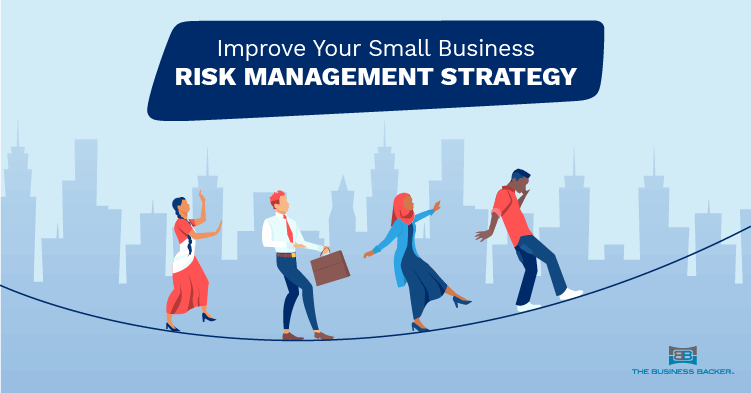4 Tips for Small Business Risk Management
Risk is often inherent in business, especially when you’re running your own. Although some business owners are open to the possibility of risk, many would classify themselves as risk-averse and spend considerable energy and effort mitigating the possibility of negative outcomes. You may make costly mistakes throughout your entrepreneurial journey, and there are also many factors outside of your control that can affect your business and its success.
Small business risk management requires significant prep work. There’s certainly no cookie-cutter approach to risk that works for every organization, but there are many areas within your business where, when given the necessary amount of attention and planning, risk can be avoided.
Here are tips you can utilize as a small business owner to avoid risk in four key areas of your business.
Keep a Keen Eye on Your Business Finances
Managing financial risks should always be at the top of a business owner’s mind, especially if you’re a first-time business owner. One of the greatest risks for small businesses is improper cash-flow management.
Every month, be sure to calculate:
- How much money you have on hand
- How long it will last if your income dries up
- Your total accounts payable
- The number of days accounts are outstanding
A slowdown in accounts payable can quickly lead to cash-flow crunches. Avoid those crunches by creating a contingency plan and setting aside three to six months of operating costs in reserves.
There are also a number of financial tools available that small businesses can use to understand their current financial standing, assist their financial responsibilities, and maintain a positive cash flow.
Prioritize Your Internal Cybersecurity Policy
Small businesses are extremely susceptible to cyber attacks, as according to Keeper Security’s 2019 SMB Cyberthreat Study, six in 10 don’t have a digital defense plan in place. Not to mention, the consequences of a cyber attack can be detrimental to a small business, costing businesses of all sizes $200,000 on average.
In order to avoid these costly consequences, be sure to create a cybersecurity policy followed by all members of your organization. This might include items such as:
- Providing guidelines for setting strong passwords
- Committing to using private WiFi networks
- Offering training on proper cyber safety practices.
Be sure to also follow up on this policy by bolstering your internal cybersecurity infrastructure. This may include utilizing antivirus software, installing a VPN, or deploying an SD-WAN solution.
Find Ways to Reduce Employee Turnover
It’s not a secret that high employee turnover can hurt your bottom line. HR Dive once reported that it costs employers 33% of a worker’s annual salary to hire a replacement if that worker leaves. In dollar figures, the replacement cost is $15,000 per person for an employee earning a median salary of $45,000 a year.
When employees leave, the ripple effect can be felt throughout the company. Lost knowledge, interviewing, recruitment and onboarding costs all add up, and small businesses can’t afford to ignore the implications high employee turnover has on the success of the business.
However, high employee turnover not only impacts your business’ financial progress, but your performance progress too. It’s been shown to cause organizations to veer from their overarching mission and vision, falter in the quality of their product, and even decrease workplace morale.
Small business owners can actively engage their employees by dedicating time and resources to employee training, management and leadership training, and workforce benefits — all of which have shown to improve employee engagement and turnover.
Have a Backup Plan
Backup plans are often the go-to strategy for risk management, but that certainly doesn’t mean they’re any less effective. As much as we would like to think that all of our ideas are going to work out 100% of the time, they usually don’t. A backup plan can help you when you get into a dicey, risk-related situation.
This can be especially beneficial for marketing or advertising strategies. Because many marketing strategies are established months in advance, there’s plenty of time for outside factors to disrupt these plans. Having a backup strategy set in place mitigates the risk of these factors and, should you no longer be able to move forward with your original marketing plan, dollars spent on these creative areas aren’t totally wasted.
These four forms of risk represent the core factors you need to consider, plan for, and work to protect against as you develop a comprehensive risk management strategy for your business. Taking the time to outline this strategy will ensure your business is healthy and thriving well into the future.





